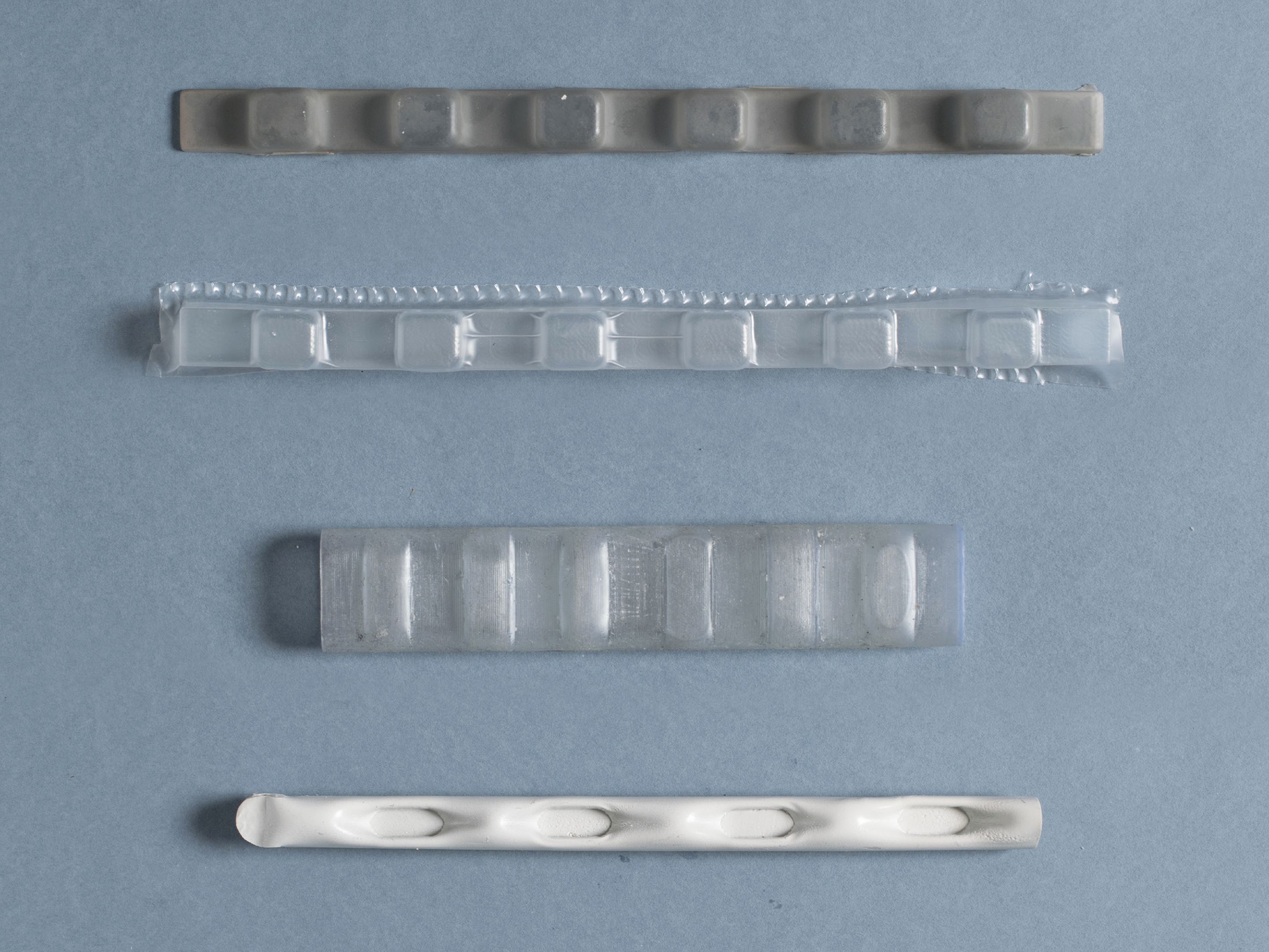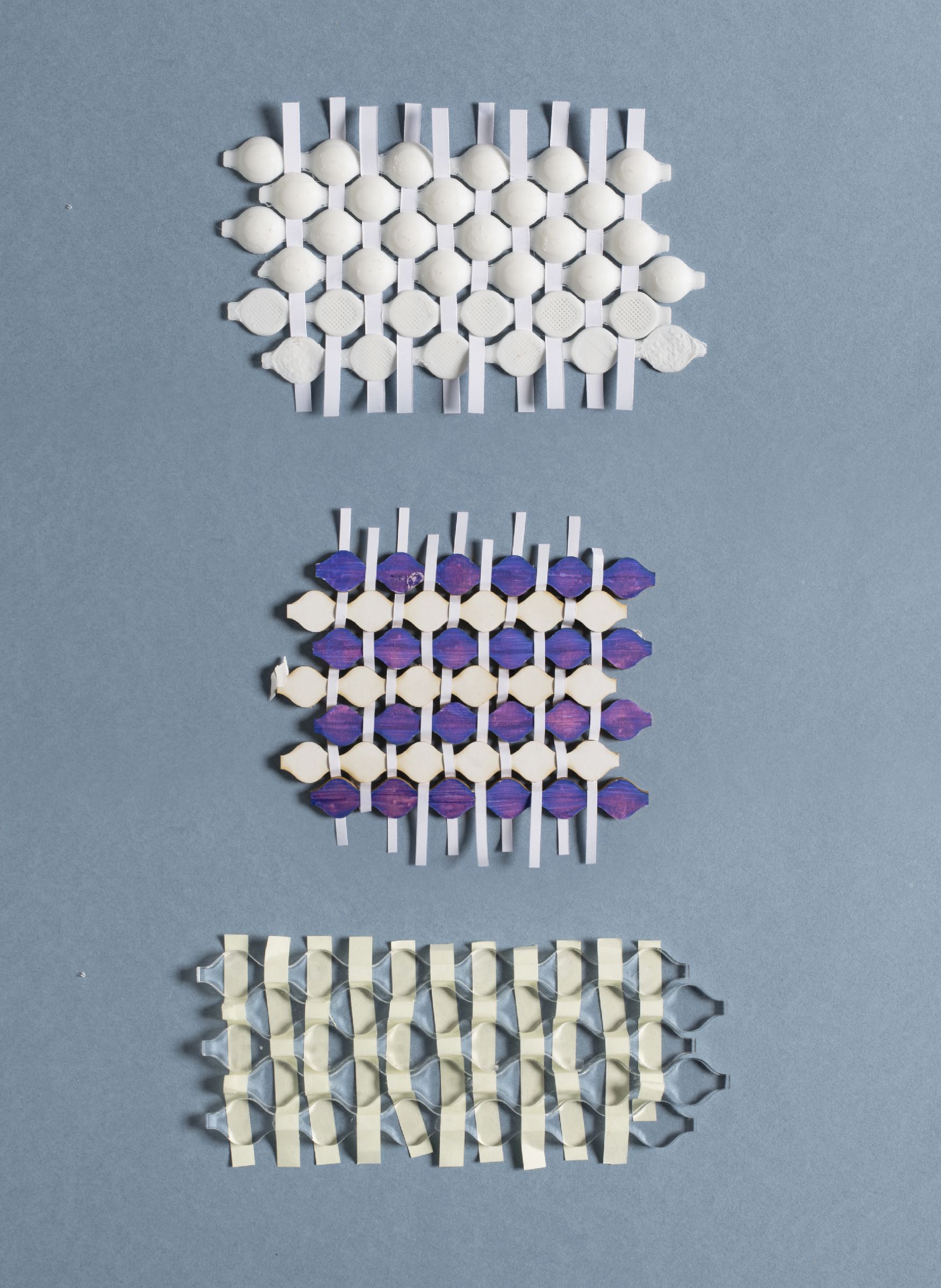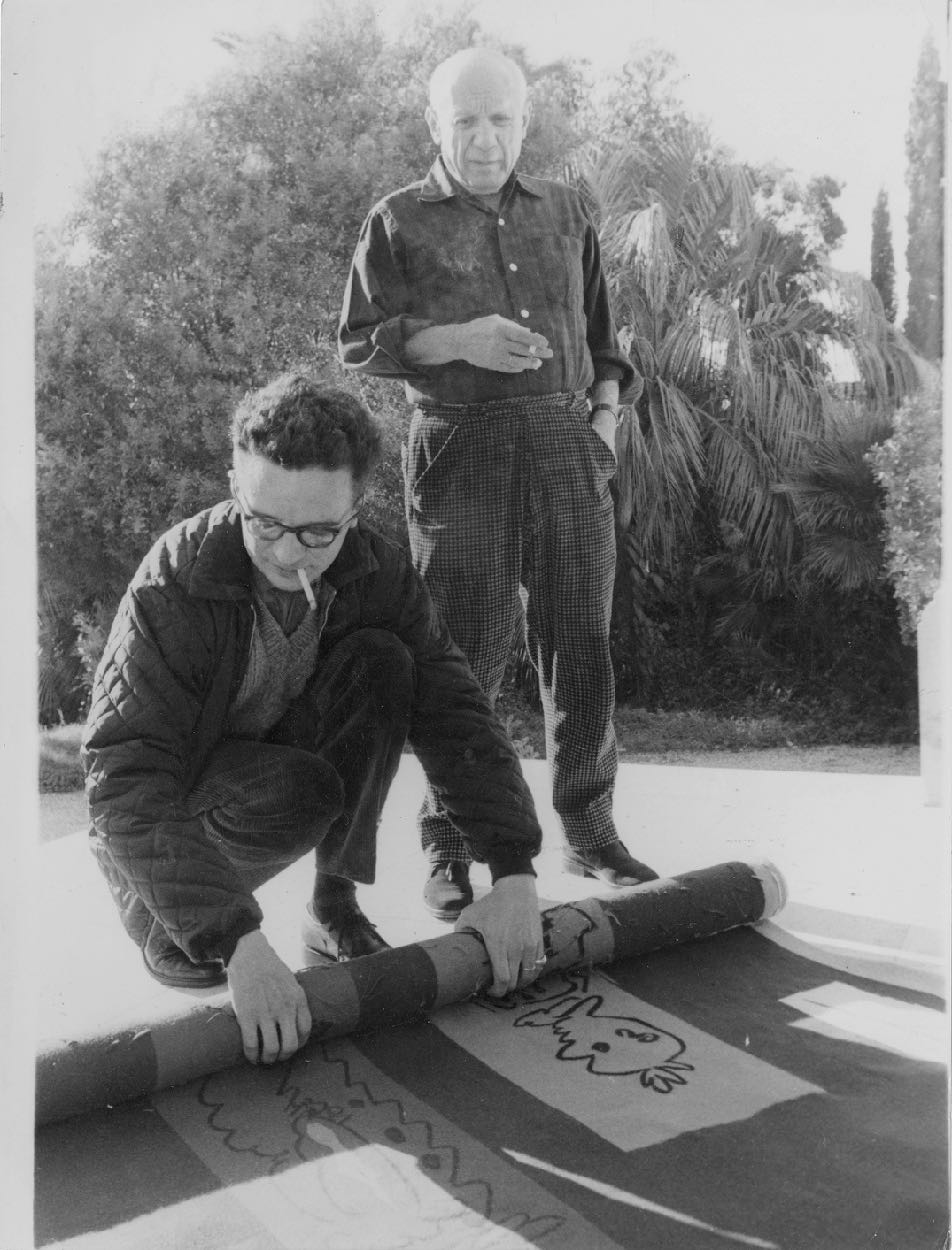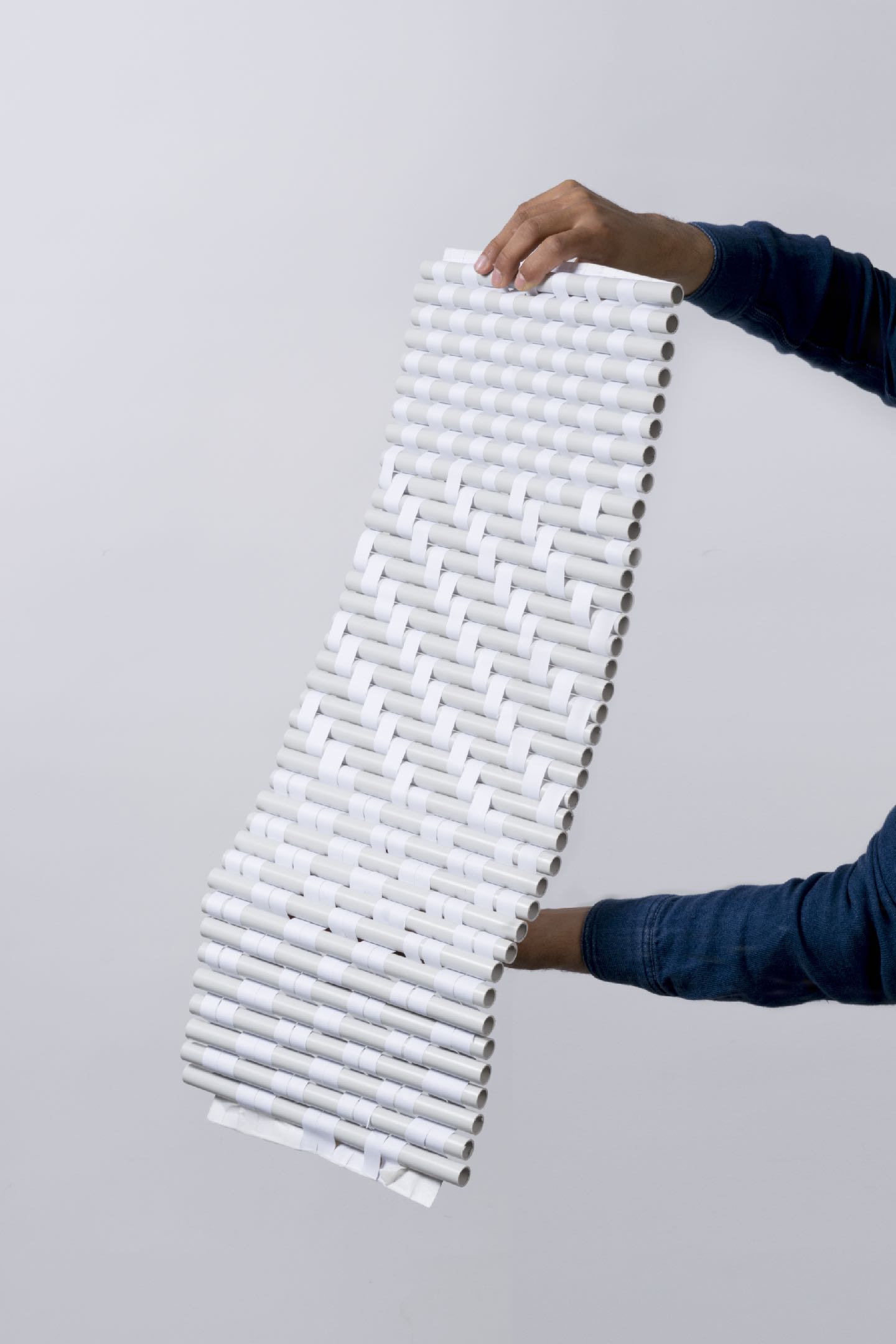Matières Spécifiques
-
Master graduation project, 2018
Direction, Jean-Francois Dingjian
ENSCI Les Ateliers
-
Most of the time, household objects are seen as a technical black box. The multiplicity of options and complex programs keeps the user away from understanding the technics and sometimes leads to a misuse. The purpose of Matières spécifiques is to reinterpret those objects. Thru two objects, I propose to bring more transparency and comprehension in the technics of each object. The use of materials with singular physical characteristics will allow to build sustainable and passive objects (no electricity needs).
-
The woven air-conditioner
The weaved air-conditioner is a low-tech version of an electric air conditioner. It naturally absorbs heat to reduce the temperature of a room during the summer.

It’s a removable wall covering for the home environment. During the summer, the phase changing material (PCM) inside its tubes, absorbs the heat of the room in which it partially covers the walls. It naturally reduces the temperature, without the use of electricity.
When it absorbs heat the PCM becomes transparent. A subtle work of openings in the weaving, allows to see a blue pattern that gradually reveals during the day. It makes visible its natural absorption cycle as the object reduces the air temperature.


The module unfolds, which makes it easy to deploy. It becomes active as soon as it is placed on its wall fixing. A module weights 10 kg, the last two bars in the weave are made in aluminum, which stiffens the top of the weave. The two fixing points divide the load. The pattern is drawn to indicate that the object is active, without being too present on the wall.


This simple “hanging” system allows you to line the wall with as many modules as necessary. While covering the wall, the object absorbs the heat in contact with the air, and creates a barrier with the heat that penetrates through the walls. When the phase change temperature is reached, here, 25 degrees, the pattern unveils and indicates the state of the phase-changing material during the day.
-
The process

This object comes from researches on thermal conductivity, heat propagation and on how materials react when changing temperature. From these researches, came a desire to highlight the use of phase changing materials. These materials, which can be bio-based fatty acids, absorb heat while they’re melting.
Damien Mathis an engineer
specialized in phase changing materials, took an
important part in the project.


Nowadays, they're used integrated into structural insulation panels for buildings. These solutions require heavy interior renovation work and do not make it possible to understand the phenomenon of heat absorption. The concept of the weaved pannel, is to get the technique out of the wall and make it visible. Damien Mathis an engineer specialized in phase changing materials, took an important part in the project. The sizing comes from his studies.

The tapestry inspiration

The main inspiration of the project was the tapestry. It’s an ancient craft, wich was used to make decorative and insulating wall coating. Today the woven object is easy to produce industrially. I experimented to find a way to contain the phase changing material that absorbs heat, while keeping transparency and having a textile decorative appearance. My experiments headed me towards a bar containing the phase change material, weaved with an aluminium composite wire.
Weaving a container









A practical folding use





Getting close to fabric decorative aspect
I worked with Lou Durand, a Textile Design student at ENSCI. We experimented and prototyped different weaving to nd the right technical and aesthetic solution and to make the nal object.




